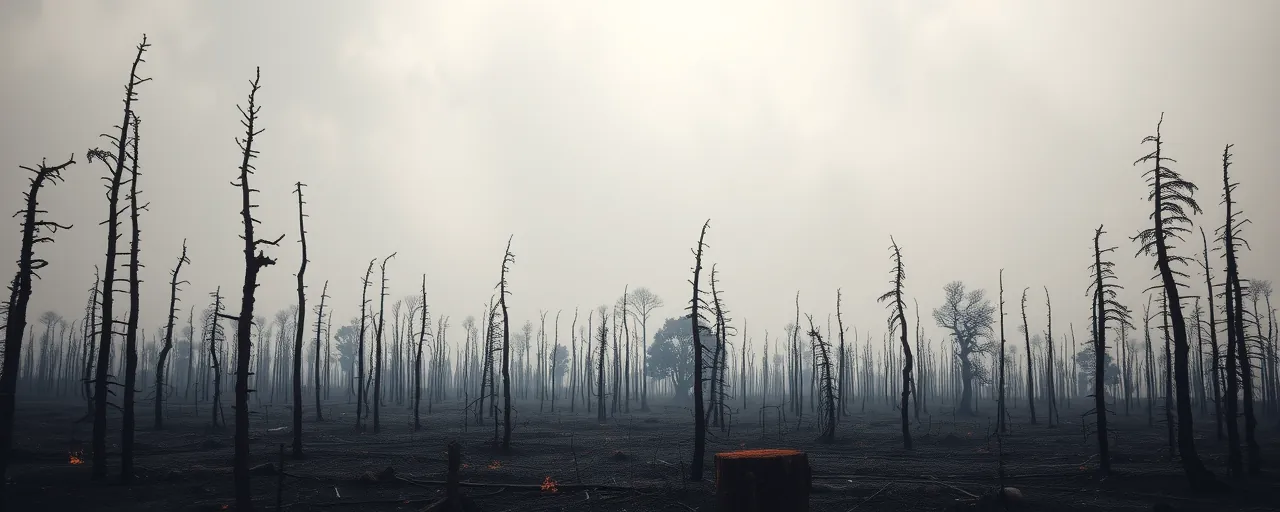A Country Battling Blazes
Wildfires rage across America, endangering homes, livelihoods, and the landscapes we hold dear. In 2025, over 17,400 fires have consumed 820,000 acres, with projections estimating up to 9 million acres burned by December. From California’s golden hills to Colorado’s towering pines, the West faces a fierce adversary, fueled by dry conditions and years of policy missteps. Yet, a new resolve takes hold. U.S. Secretaries of Agriculture Brooke Rollins and Interior Doug Burgum have united to confront this crisis with unwavering determination.
On May 20, 2025, Rollins and Burgum signed a joint memorandum, signaling President Trump’s commitment to decisive action. This plan rallies federal agencies, state and tribal partners, and local communities to safeguard lives and property. It prioritizes swift, coordinated responses over the bureaucratic delays of the past. Why wait for disaster to strike when bold preparation can change the outcome?
For years, excessive regulations and environmental lawsuits have left our forests dangerously overgrown, turning them into kindling for catastrophic fires. The USDA’s Forest Service, now armed with a $1.6 billion budget for 2025, is breaking these barriers, equipping our firefighters with unmatched resources. This fight is about preserving our way of life, and we’re ready to take it on.
Strength Through Coordination
The USDA-Interior memorandum transforms how we tackle wildfires. It ensures seamless collaboration between agencies, directing resources and personnel to where they’re needed most. At the Forest Service National Fire Desk, Rollins and Burgum reviewed 2025 fire projections, confirming an above-normal season demands exceptional readiness. By allowing USDA staff to take temporary fire assignments, the department is bolstering our firefighting force with every available resource.
This effort reaches beyond federal boundaries. State, local, and tribal partners bring critical local expertise, enhancing the strategy’s impact. In Oregon, community wildfire protection plans have reduced fuel around 2,500 homes, while Colorado’s rural areas have protected structures through proactive tree clearing. Federal funding supports these local successes, proving that empowering communities delivers results.
Past disaster responses often suffered from agency overlap, with FEMA, EPA, and others working at cross-purposes. The Trump administration’s streamlined approach cuts through this chaos, uniting efforts under a clear chain of command. When lives are on the line, why let red tape stand in the way?
Managing Forests, Saving Lives
Effective wildfire prevention starts with active forest management. Decades of aggressive fire suppression, rooted in the 1910 Big Burn’s legacy, have left forests overloaded with fuel. The result? Denser woodlands that ignite easily and burn hotter. Today’s leaders embrace mechanical thinning and logging to clear excess timber, reducing the risk of mega-fires that devastate communities.
The Project 2025 framework pushes for fewer regulatory hurdles, enabling more timber harvests to manage fuel loads. In 2023, 56,000 wildfires charred 2.7 million acres, underscoring the urgency of this approach. Community efforts, like Firewise USA’s 2,200 neighborhoods clearing brush and upgrading roofs, amplify these gains. In New Mexico, homeowner grants from the Wildfire Adapted Partnership saved dozens of structures in recent fires. These practical steps deliver measurable results.
Some argue that logging harms ecosystems, but this overlooks the controlled burns practiced by indigenous communities for centuries. Thinning forests mimics these natural processes, creating healthier landscapes. Why cling to failed policies when proven solutions are within reach?
Focusing on What Works
Certain voices attribute wildfires solely to rising temperatures and extended droughts, citing NASA’s data on doubled fire-weather risk in the West. NOAA notes billion-dollar disasters now strike every 18 days, compared to 82 days in the 1980s. While weather patterns play a role, this focus ignores the root cause: neglected forest management. Blaming climate shifts excuses decades of policy failures and delays actionable solutions.
The Fix Our Forests Act, backed by pragmatic lawmakers, speeds up forest health projects and funds community defenses, like predictive risk modeling and fire-resistant building codes. These measures address immediate threats without getting lost in global climate debates. Why chase abstract goals when clearing overgrown forests protects homes today?
Our Shared Responsibility
America faces a defining moment in its wildfire battle. We can repeat past mistakes or choose a path of strength and preparation. Rollins and Burgum’s strategy unites agencies, empowers communities, and prioritizes forest management. With $287.6 million for fuels management, 1.8 million acres will be treated, building safer landscapes for the future.
Every citizen can contribute. Maintain defensible space around your property. Follow local fire restrictions before starting a campfire. Advocate for policies that favor active forest management over regulatory gridlock. These actions honor the firefighters who risk their lives to protect us.
The era of passive wildfire response is behind us. With bold leadership and practical solutions, we can curb the wildfire threat and preserve the landscapes that define America. Let’s act now, with resolve, to secure a safer tomorrow.
